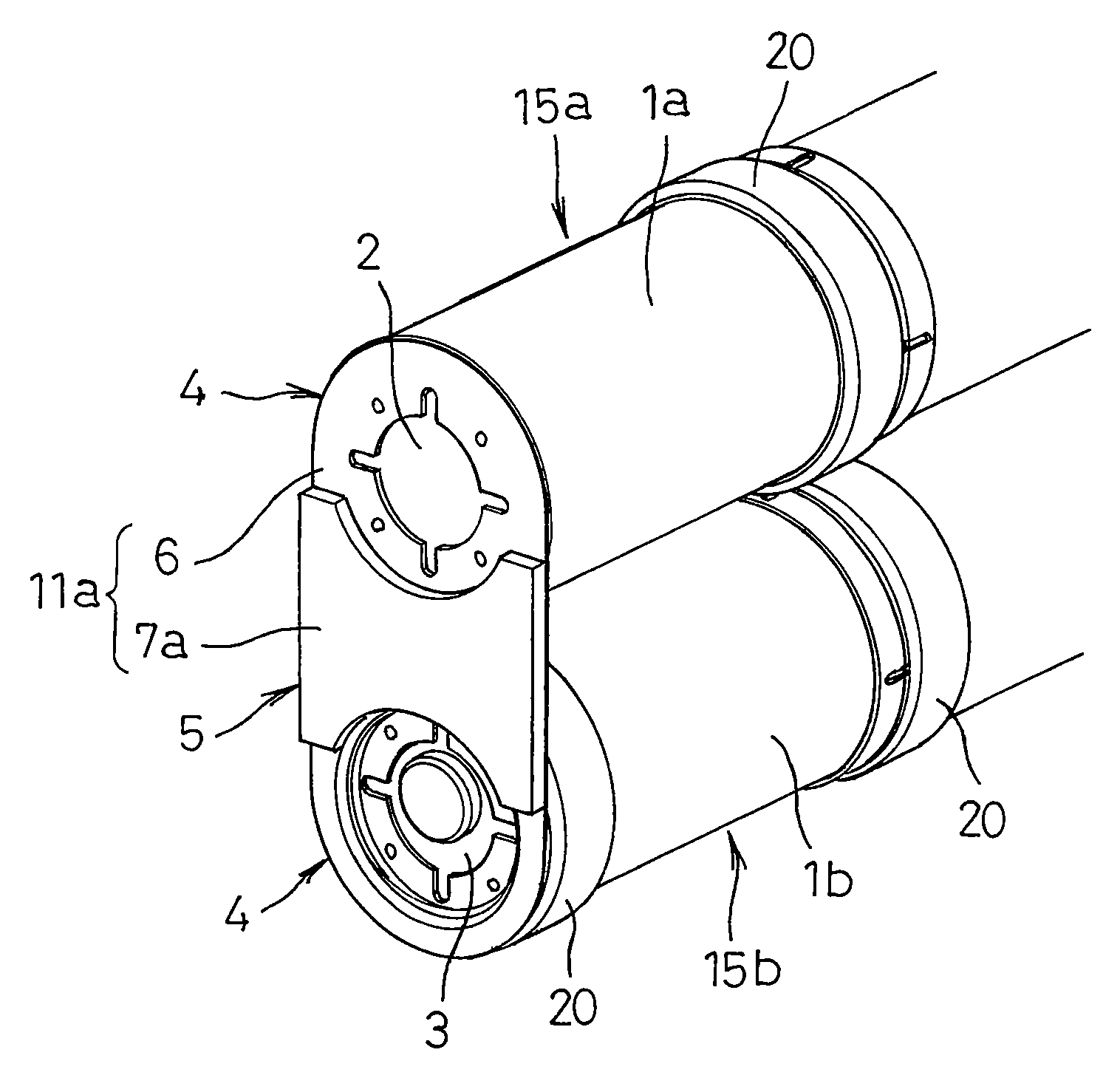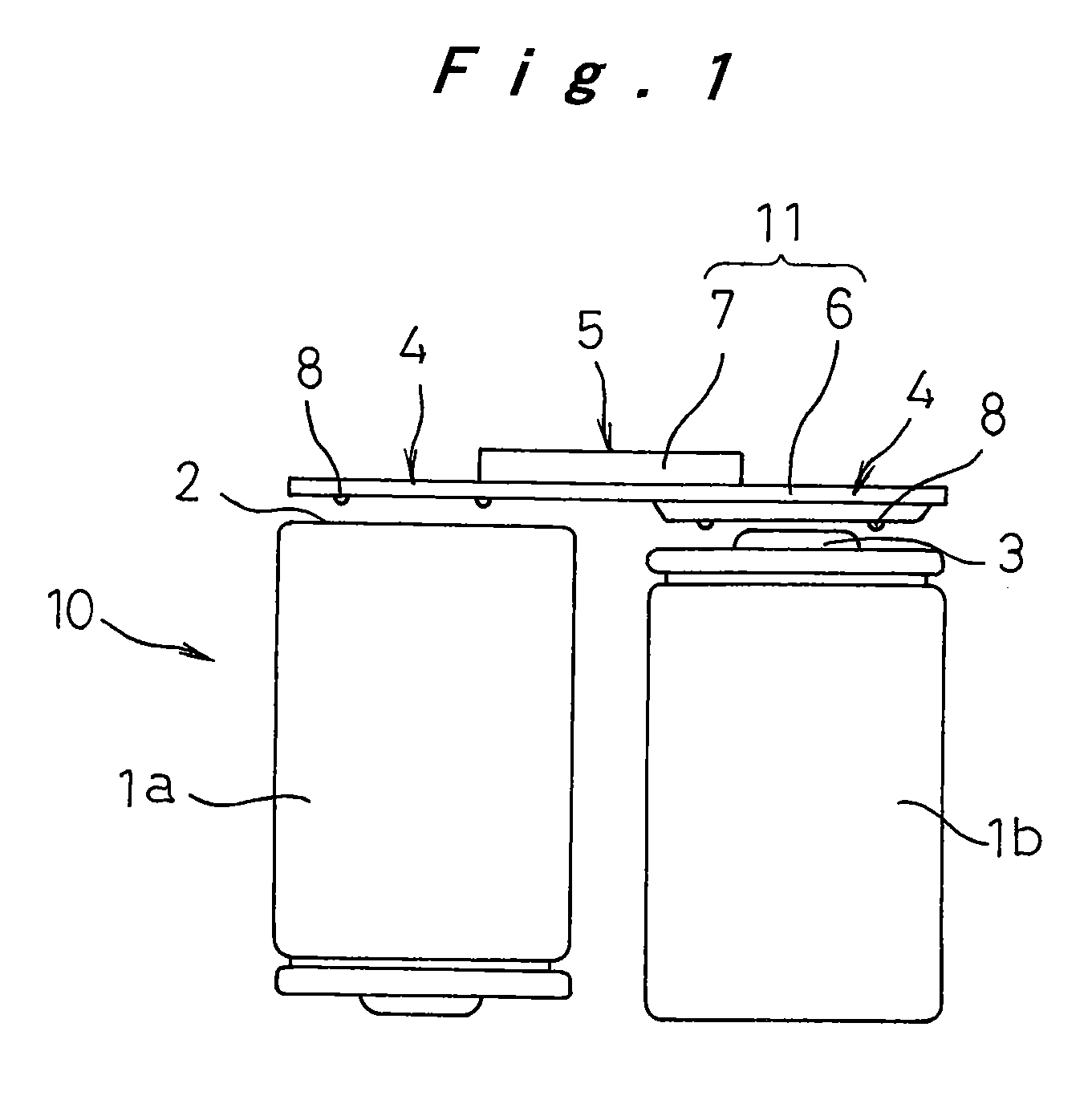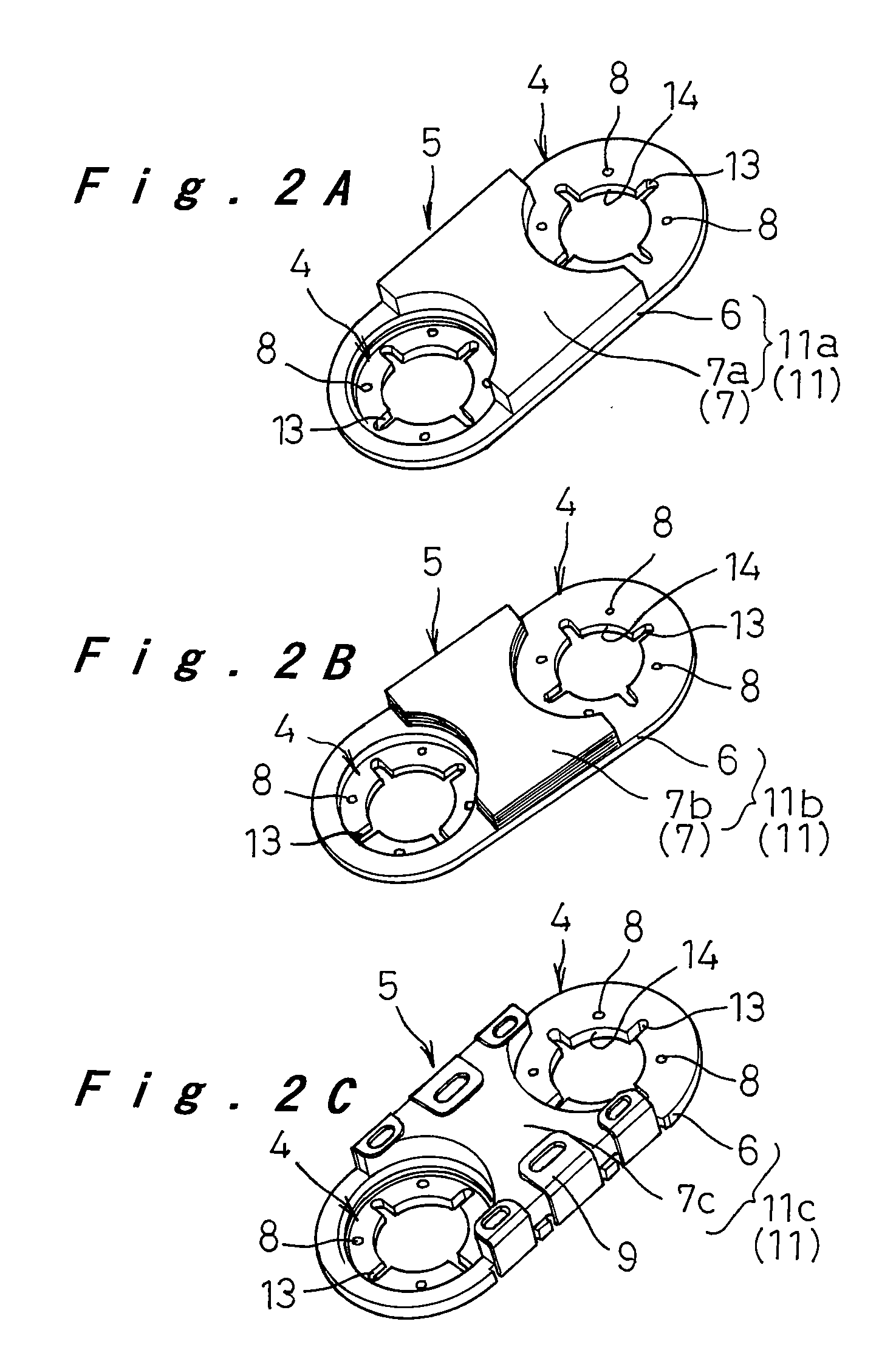Inter-battery connection device
a connection device and battery technology, applied in the direction of current conducting connection, cell components, nickel accumulators, etc., can solve the problems of increasing the thickness of the connection plate, increasing the electric resistance, and reducing the weldability of the connection plate to the battery case or the sealing plate, so as to prevent the reactive current, ensure the fit, and ensure the effect of welding
- Summary
- Abstract
- Description
- Claims
- Application Information
AI Technical Summary
Benefits of technology
Problems solved by technology
Method used
Image
Examples
first embodiment
(First Embodiment)
[0034]A first embodiment is first described with reference to FIGS. 1 through 5. FIG. 1 is a front view showing a connection step of a battery pack. A battery pack 10 consists of two batteries 1a, 1b and an inter-batter connection plate 11, as an inter-battery connection device, for connecting between the terminals of the batteries 1a, 1b with different polarities (specifically, between a battery case bottom 2 and a battery sealing plate 3). The inter-battery connection plate 11 is composed of welding portions 4, 4 arranged at its both ends and an intermediate portion 5 connecting the end welding portions 4, 4. The intermediate portion 5 is formed thicker than each welding portion 4. In FIG. 1, the inter-battery connection plate 11 is composed of a base plate 6 including the end welding portions 4, 4 and an intermediate metal plate 7 joined to the base plate 6 at the intermediate portion 5.
[0035]Each end welding portion 4 includes projections 8. The end welding por...
second embodiment
(Second Embodiment)
[0045]A second embodiment is now described with reference to FIGS. 6A through 10. Unlike the first embodiment of the inter-battery connection device, which is composed of a single inter-battery connection plate 11, the inter-battery connection device of the second embodiment is composed of two components, a connection plate 16 and a connection ring 18, joined together. In the following description, the same components as those in the first embodiment are denoted by the same reference numerals and their description will not be repeated.
[0046]As shown in FIGS. 6A to 6C, the inter-battery connection device of the second embodiment includes a connection plate 16 and a connection ring 18. The connection plate 16 includes at one end thereof a thin welding portion 4 for welding to the sealing plate 3 of a battery 1b. The connection plate 16 also includes a thick intermediate portion 5 and a connection arm 17 that has a uniform thickness and extends from its intermediate ...
example
[0052]An inter-battery connection plate lla as shown in FIG. 2A was used to connect batteries 1a, 1b to make a battery pack as one example of the present invention. The inter-battery connection plate 11a was prepared by joining (by any of resistance welding, ultrasonic welding, friction stir welding and laser welding) a 2.6 mm-thick intermediate metal plate 7a made of nickel-plated iron to the middle part of a 0.4 mm-thick base plate 6 made of nickel to form an intermediation portion 5 with a total thickness of 3.0 mm.
[0053]In the connection step using the inter-battery connection plate 11a, two welding electrodes 8 were placed against the projections 8 in the welding portions 4 of the inter-battery connection plate 11a as shown in FIG. 4. One of the welding portions 4 was then welded to the battery case bottom 2 of the one battery la with a diameter of 32 mm while the other welding portion 4 was similarly welded to the sealing plate 3 of the other battery 1b. This completed a batte...
PUM
| Property | Measurement | Unit |
|---|---|---|
| thickness | aaaaa | aaaaa |
| diameter | aaaaa | aaaaa |
| thickness | aaaaa | aaaaa |
Abstract
Description
Claims
Application Information
 Login to View More
Login to View More - R&D
- Intellectual Property
- Life Sciences
- Materials
- Tech Scout
- Unparalleled Data Quality
- Higher Quality Content
- 60% Fewer Hallucinations
Browse by: Latest US Patents, China's latest patents, Technical Efficacy Thesaurus, Application Domain, Technology Topic, Popular Technical Reports.
© 2025 PatSnap. All rights reserved.Legal|Privacy policy|Modern Slavery Act Transparency Statement|Sitemap|About US| Contact US: help@patsnap.com



